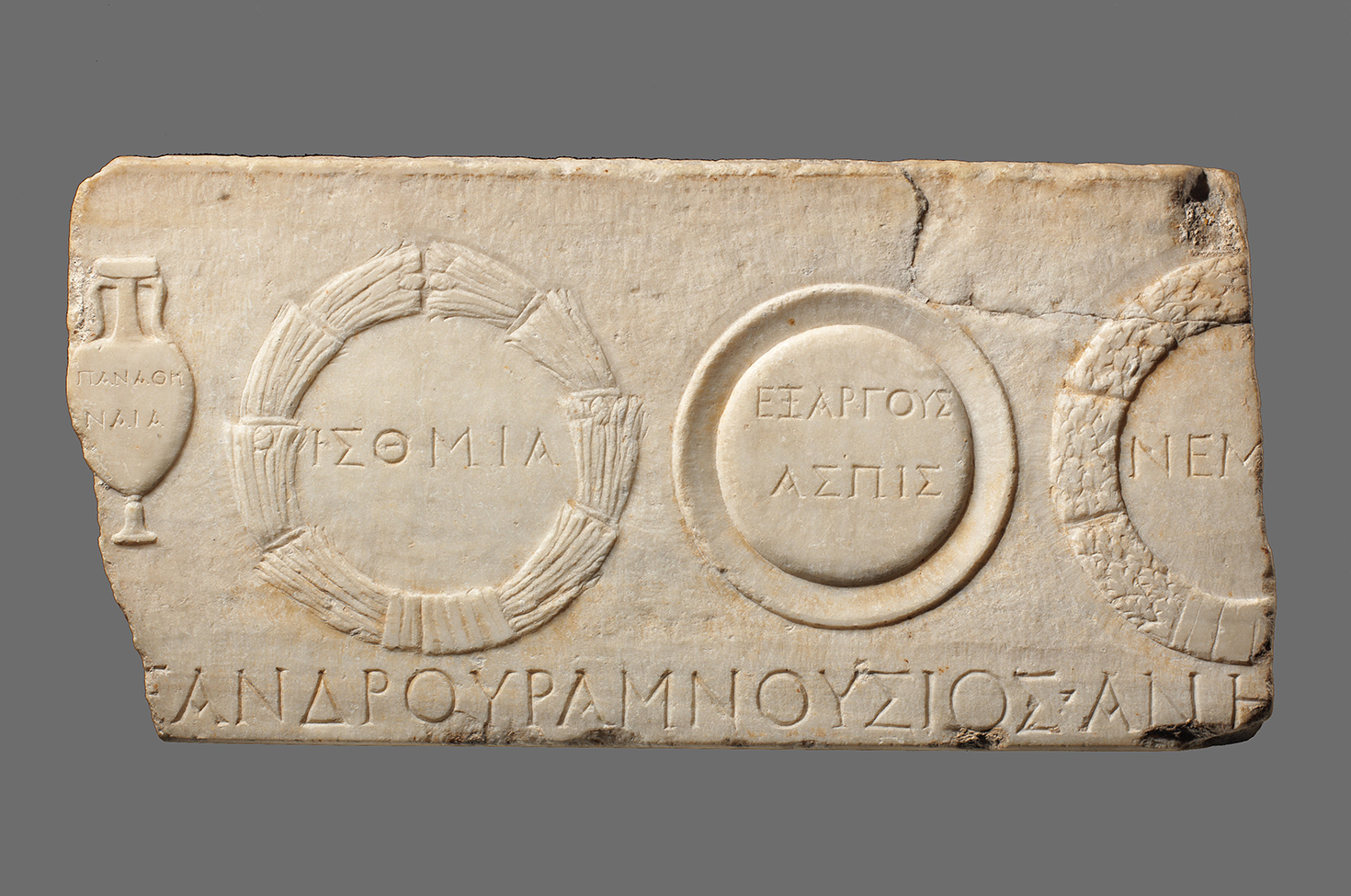
Marble relief fragment depicting athletic prizes, Roman, second century. The Metropolitan Museum of Art, Rogers Fund, 1959.
• “Why do those in positions of authority blame disorder on outside agitators?” (NYR Daily)
• On uncomfortable Mayan earrings: “One end of a long strip of the plain bark paper was used to pierce the earlobe, and the strip would then be worn hanging from the ear as a gesture of penance.” (Archaeology)
• The story of the largest mass arrest in U.S. history. (Mother Jones)
• A history of sports bubbles. (TheAtlantic.com)
• “Eighteenth-century Italian noblewomen had one indispensable accessory: an extramarital lover.” (JSTOR Daily)
• “What the First Women Voters Experienced When Registering for the 1920 Election.” (Smithsonianmag.com)
• “It’s time for the British royal family to make amends for centuries of profiting from slavery.” (Slate)
• “Running a marathon was never crazier or harder than during the 1904 St. Louis Olympics.” (ABC News)
• “Despite their rough-and-tumble existence, Neanderthals had a biological predisposition to a heightened sense of pain, finds a first-of-its-kind genome study.” (Nature)
• “With Hood Century, Jerald Cooper is building a new type of preservation society, editorial platform, and archive as a way to make design more exciting to more people.” (Curbed)
• On the unusual union of a renowned artist and the discoverer of the polio vaccine. (Nautilus)
• “How Black Pullman Porters Waged a Struggle for ‘Civil Rights Unionism.’ ” (Jacobin)
• This week in obituaries: Herman Cain, Olivia de Havilland, Lee Teng-hui, Peter Green, Ronald Bergan, Kansai Yamamoto, Peter Graham, Rene Carpenter, Josephine Cox, Bent Fabric, Regis Philbin, Mason Gaffney, and Annie Ross.